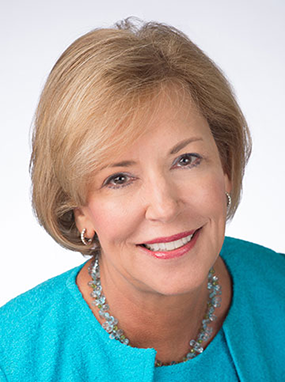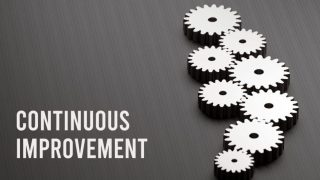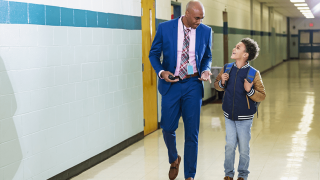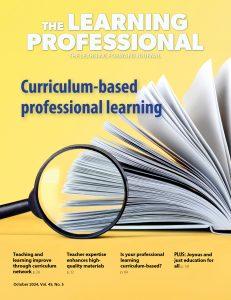When I was a local school board member, parents frequently asked for my advice on how to ensure their child got a particular teacher in a school. I knew how the game would be played after I reminded them this wasn’t the role of the school board: They would write the principal with their requests for the next year. The principal would respond to assure the parents that no matter which classroom their child was assigned, he or she would have a great year.
However, in some cases, the principal knew that wasn’t entirely accurate. Some teachers were stronger than others in his or her school, and there was no mechanism to give all students access to the best.
That no longer has to be the case. Schools that commit to everyone learning and sharing responsibility for the success of every student spread the effectiveness of teaching from room to room, making sure every student has access to excellent teaching every day.
Both individual and collective learning are critical to support all teachers to be their best. Here are several assumptions I hold about balancing individual and collective learning.
- Teachers shouldn’t have to choose between individual and collective learning. Both are essential to ensuring student growth, and each has its essential place in the school improvement process.
- One is not necessarily more powerful than the other. What makes one a higher priority is the level of impact it can produce and the most urgent needs in a school or system.
- When teachers learn alone, they can pinpoint individual needs, feel less vulnerable, and address their own challenges more immediately.
- When teachers learn together, they learn that their colleagues share many of their needs or have answers to their questions. They also realize they themselves have expertise that can help others. They see that they can contribute to collective learning and wisdom that will benefit students beyond those assigned directly to them.
So what would it take for every principal to be able to say that every student in the school experiences great teaching every day no matter which teacher serves in his or her classroom?
- Start by telling teachers they work in a learning school committed to schoolwide, team, and individual learning. Learning at all levels is a priority.
- Implement a cycle of continuous improvement that clearly defines the data used to identify learning priorities, supports individual and collective learning strategies, promotes follow-up support, and monitors for impact and improvement. Every individual and team follows this cycle: the school leadership team, grade-level and cross-grade teams, and department teams. Building alignment and coherence across these teams is essential for success.
- Elevate and celebrate the expertise that resides within the school, commit publicly to shared responsibility, and advocate for the resources necessary to sustain a learning school.
- Acknowledge that individuals closest to the job know it best and deserve to have resources to support their needs. Recognize that others have powerful perspectives to bring to those trying to improve.
When we embrace learning as everyone’s responsibility, we’ll change the conversations that happen before the start of each school year. I am pleased to see more schools every year that share our philosophy: At school, it’s everyone’s job to learn.
This post originally appeared in Learning Forward’s PD Watch.






